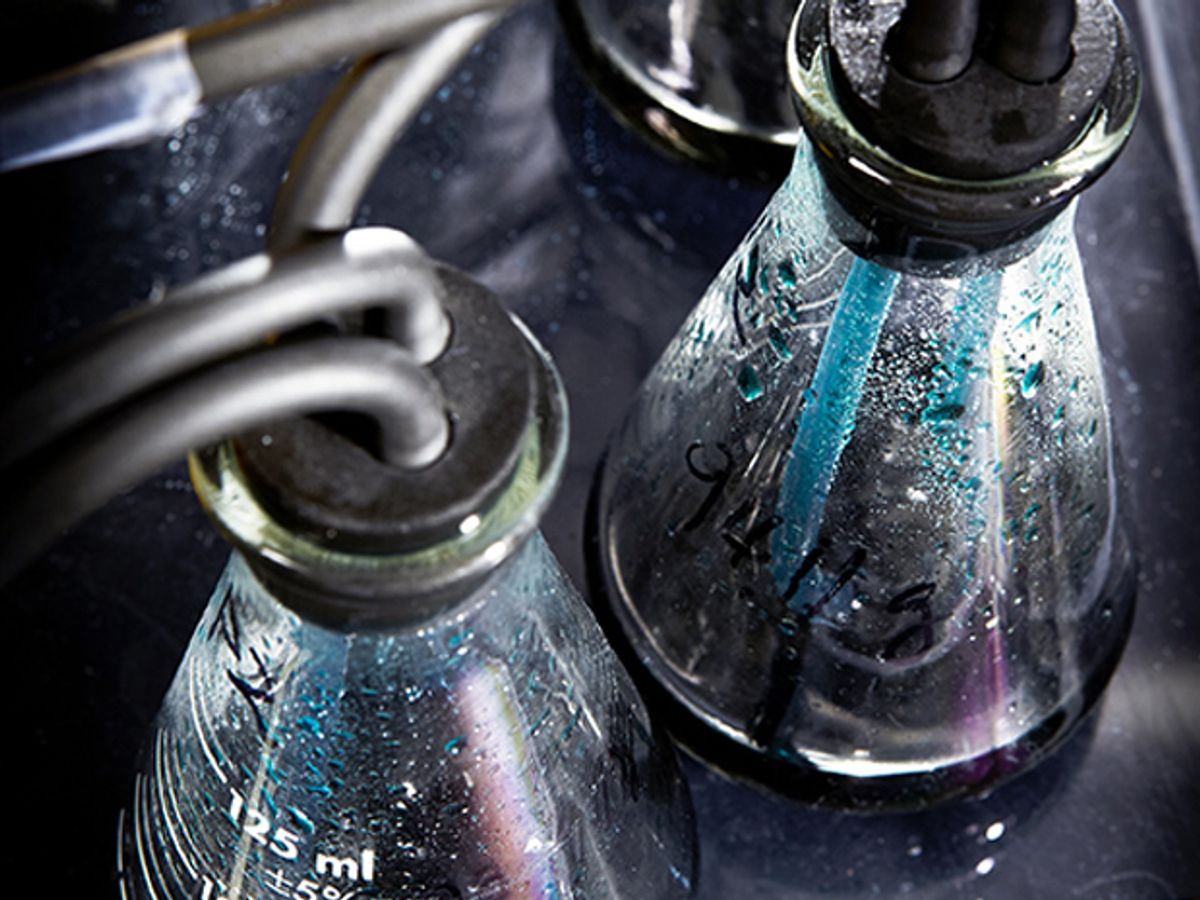Utilities and governments want massive energy storage assets to smooth out the intermittent nature of wind and solar power. One possibility are flow batteries that use liquids to store and release energy, but these devices have been plagued by low energy density — that is, how little energy they supply for their size. Now researchers at Pacific Northwest National Laboratory in Richland, Wash., have developed a new flow battery that packs more than twice as much energy density as other flow batteries.
A conventional battery’s solid electrodes are replaced two liquid electrolytes. The liquids, contained in separate tanks, flow into the battery's stack, and chemical reactions between the liquids take place across a porous membrane to discharge and recharge the battery.
The energy capacity of a flow battery can easily be expanded by adding more fluid, and they are also relatively inexpensive per kilowatt-hour compared to the lithium-ion batteries often used in mobile devices, potentially making them attractive for storing energy for power grids. However, the use of flow batteries has been limited by their low energy density—to be part of a power grid, they would need a lot of space, which is often limited in the cities they are meant to power.
The new flow battery uses a black zinc-polyiodide liquid and a clear zinc-iodide liquid. The laboratory prototype held just 12-watt-hours, comparable in capacity to about two iPhone batteries. But it performed with a capacity put out 167 watt-hours per liter of electrolyte, compared to about 70 for a zinc-bromide flow battery and 15-25 watt-hours per liter for a vanadium battery. (For comparison, electric cars use about 350 watt-hours to drive 1.6 kilometers in a city.)
In theory, the researchers calculated their new battery could discharge up to 322 watt-hours per liter if more chemicals were dissolved in the liquids. Such a battery would beat the 233 watt-hours-per-liter energy density of a common lithium-ion battery called a lithium iron phosphate battery, which is used in portable electronics and in some small electric vehicles.
The researchers noted their new zinc-polyiodide battery is also safer because its liquids are not acidic like those of most other flow batteries. So it does not require expensive materials to withstand the corrosion Furthermore, their new battery can operate in extreme climates from -20 to 50 degrees C, a much larger operating window than other batteries, which can require heating and cooling systems that cut into the net power they produce.
One problem with the prototype is how metallic zinc can build up in the device that can make it less efficient. Still, the PNNL researchers noted that they could add alcohol to reduce this buildup and will explore other additives to control this reaction.
The scientists plan to experiment with a larger 100-watt-hour model of their battery. They detailed their findings online 24 February in the journal Nature Communications.
Charles Q. Choi is a science reporter who contributes regularly to IEEE Spectrum. He has written for Scientific American, The New York Times, Wired, and Science, among others.



